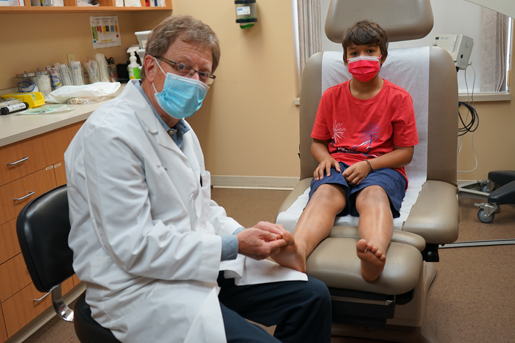Basics of Ingrown Toenails

According to the American Podiatric Medical Association, approximately 20 percent of the U.S. population has at least one foot problem annually. One of the more common foot ailments is an ingrown toenail. An ingrown toenail can be something you can manage at home on your own, or it can become infected and need medical treatment. If you have diabetes or another condition that causes poor blood flow to your feet, you're at greater risk of complications of ingrown toenails.
An ingrown toenail is caused by a nail growing in incorrectly, usually at an angle in which it embeds itself into the surrounding skin.
Ingrown toenails can be caused a number of ways such as: cutting a nail too short or too rounded on the edges, tight or restrictive footwear (especially shoes with pointed toes), foot trauma, and genetics.
The most prominent symptom of an ingrown toenail is pain in the foot. Pain is typically accompanied by redness, swelling, and, in some cases, discharge around the affected toe. While ingrown nails can occur on any toe, they are most common on the big toe.
There are different options for treating an ingrown toenail. If an infection is present, an antibiotic can be prescribed to clear it up and to minimize discomfort. The most effective treatment is cutting and extricating the part of the nail that is growing into the skin. If the issue returns, the provider might remove the nail root. Left untreated, an ingrown toenail can infect the underlying bone and lead to a serious bone infection.
There are steps you can take to prevent ingrown toenails. First, wear comfortable shoes with a toe-box wide enough for you to wiggle your toes with ease. Keep your toenails trimmed, and always cut a straight line, never at a curve and never overly short. If ingrown nails are an ongoing issue despite taking these steps, consult your medical provider or podiatrist for an in-depth examination.
Pictured: Dr. Steve Mariash, MLHS visiting podiatrist and patient
